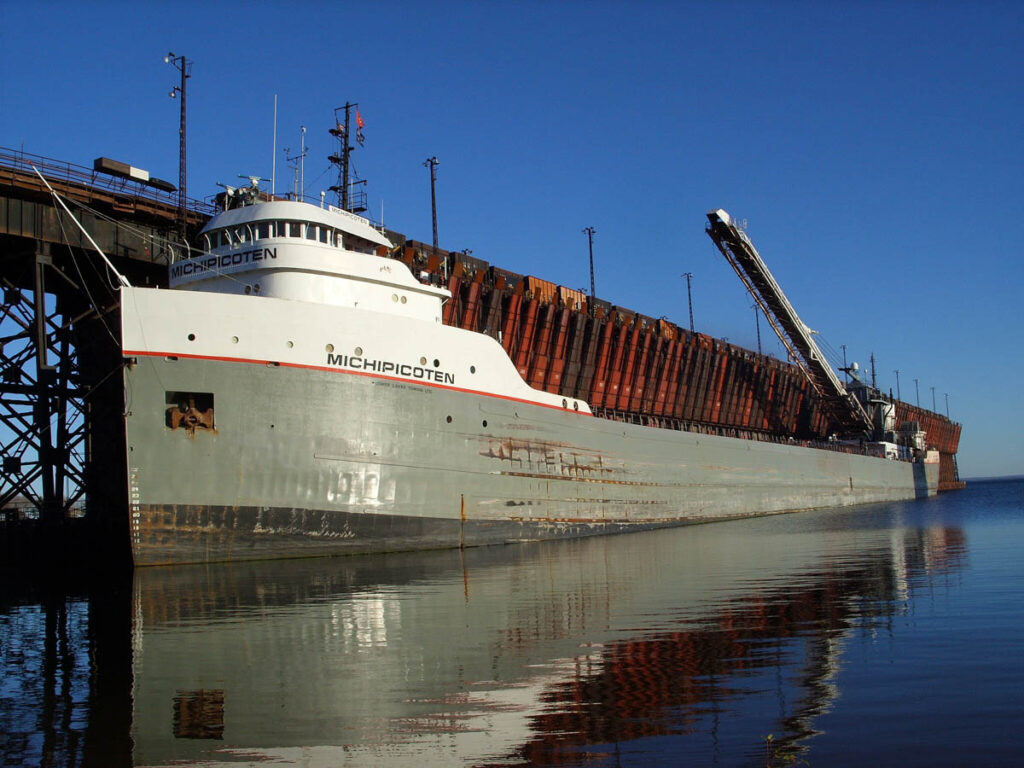Water gushed into a mystery 13-foot tear in the hull of the freighter Michipicoten, which was saved in Lake Superior back in June 2024, Regarding the future of the vessel, speculation abounds.
Lower Lakes Towing, a Canadian shipping company, owns and operates the self-discharging lake steamer Michipicoten (formerly known as Elton Hoyt II when it was first put into operation in 1952). Michipicoten’s main cargo is taconite, which it transports from Marquette, Michigan, to Sault Ste. Marie, Ontario’s Algoma Steel Mill. It is 22,300 tons in capacity, moves at 12 knots (14 mph), and is 689 feet 6 inches (210.2 m) long.
Elton Hoyt II established a pattern of transporting iron ore from Duluth, Minnesota, or Superior, Wisconsin, to several ports in the lower Great Lakes during the course of the ensuing nearly two decades.
Elton Hoyt II enjoyed an incident-free career in the 1950s. Its overall length was increased to 698 feet 6 inches (212.90 meters) in 1957 after it was extended by 72 feet (22 meters). Its capacity was also enhanced to about 23,000 tons by the lengthening. The Elton Hoyt II was purchased by Pickands Mather and Co. in 1966. Their navy held it until 1973.
The Elton Hoyt II was used in a variety of ways during the 1980s and 1990s. There were seasons when it didn’t sail. In addition to its routine loads of taconite, the ship made multiple journeys to Buffalo, New York in the 1990s after receiving certification to transport grain.
The sale of Elton Hoyt II to the Canadian shipping company Lower Lakes Towing was announced on April 10, 2003. Michipicoten, after the eponymous river in Canada, was the new name given to it. In the Ojibwe language, the hills by the river are referred to as “Big Bluffs” or Michipicoten. On May 24, 2003, in Sarnia, Ontario, it was christened. The ship started delivering taconite to Sault Ste. Marie, Ontario’s Algoma Steel Mill.
In Sarnia, Michipicoten was lay up in December of 2010. Its steam turbine system was rebuilt over a few months with a new pitch propeller and a MaK 6M32C 6-cylinder diesel engine with 8,160 brake horsepower (6,080 kW). The refurbishment came at a cost of about $15 million USD.
Hull Damage
On June 8, 2024, the ship was sailing close to Isle Royale in Lake Superior when it noticed damage to its hull. The ship was in deep water when the crew reported hearing a tremendous blast. The ship started to take on water, and at one point its list was fifteen degrees. The list was reduced to five degrees by the crew’s ability to initiate pumps and issue a distress call. The M/V Edwin H. Gott responded to the distress call and waited with the Michipicoten until the US Coast Guard arrived. En route to Thunder Bay, Ontario, the ship powered herself there under the guidance of escorts from the U.S. and Canadian Coast Guards. Although it was initially believed that the ship had collided with an undersea item, however, there has been no evidence found to suggest a collision.
After inspecting the hull while in port, divers concluded that weariness was probably the primary cause. A roughly four-meter-long breach in the hull was found by divers. “It looks like a hull failure, which could be the result of stress, fatigue, or age of the vessel,” a Coast Guard member said, although he stressed that a thorough examination is necessary to fully ascertain the cause. The precise reason behind the harm is yet a mystery. The divers filled in the fissure with a makeshift fix.
Michipicoten set out on her own on June 20, 2024, heading for Fraser Shipyards in Superior, Wisconsin, where she is presently undergoing maintenance and inspection. Helen H., the tug, escorted her.
There is a lot of conjecture that the 72-year-old vessel will be demolished at the Fraser Shipyards in Duluth.
You Tube W. Wes Oleszewski







